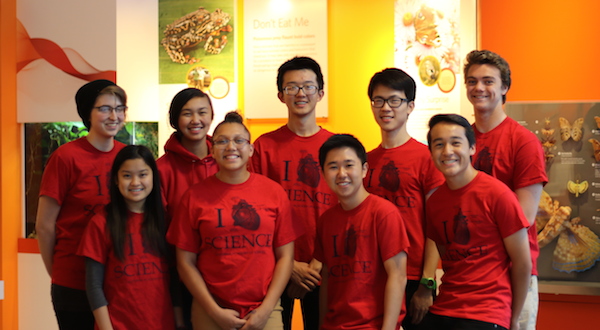The #EngineerThat challenge has concluded. Thank you to everyone that participated! View the top five submissions and meet the two teams that were the audience favorites.
The world is full of interesting problems to solve.
We are all constantly observing and assessing what’s not working around us, and thinking of ways to improve it. That is the heart of engineering: being curious about a problem, investigating potential solutions, and designing and testing those solutions.
KQED is inviting youth, ages 11-18, to share ideas for solving a problem at school, at home or in your community.
The Challenge
- Identify a problem at school, at home, or in your community that can be solved or improved through engineering. You may have an idea already. Is there a water fountain that could be designed to waste less water? Could you redesign lighting at school to be more energy efficient? What’s your vision for how to redesign something to make it better? We encourage you to interview friends, family members and leaders in your neighborhood to gather ideas.
- Define the criteria and constraints. What are the characteristics your design needs in order to be successful? Take into account relevant scientific principles, and impacts on people and the environment. What are the limitations of your design? Think about the materials you’d need, the physical size of your product, cost, etc.
- Come up with a possible solution based on your criteria and constraints. You are not required to actually build your solution, just to develop the idea and visually explain it. You can sketch your idea on paper or in a drawing app, build a prototype using everyday materials, or show your design in another way. You may want to gather feedback on your original solution and make changes to your design.
- Create a piece of media that clearly explains the problem and why it needs to be solved, describes the constraints and shows your solution. We will accept short videos (no more than 2 mins), photos, drawings, images or infographics.
- Share your submission using hashtag #EngineerThat. You will need to publicly share your submission on a social media platform. For this challenge, we are asking you to submit through Twitter, Facebook, YouTube or Instagram. (Note: If you are under 13, you will need to submit your idea on social media through your teacher’s or parent’s account.)
- Confirm your submission here.

Your Submission Should Be
Creative - Let your talent shine! Express your idea with style.
Clear - Make sure your idea and design is easy to understand.
Concise - Keep it short and stick to the point.
Catchy - Go viral! Share with friends and family on social media.
Questions? Watch Our Webinar
Did you miss our webinars about the challenge? Click here to view a recording. You can view the webinar slides here.
Challenge Timeline
- Submissions will be accepted October 21, 2015 through January 24, 2016.
- KQED and our teen judges from the Teen Think Tank at the California Academy of Sciences will select some of the most outstanding solutions. Then, we will let the KQED audience chime in from
February 6-12, 2016. Updated: February 18-23. - We will feature the top five solutions in February 2016. Stay tuned for details!

Resources for Educators
- Engineering Design Process - from TeachEngineering
- NGSS Middle School Engineering Design
- NGSS High School Engineering Design
Things You Need To Know Before Submitting Your Solution
All solutions shared via #EngineerThat are subject to KQED.org's Terms of Service.
- Please take special note that:
- If you are aged 13 to 17 you’ll need to have permission from your parent or a legal guardian before you submit a solution to #Engineer That. If you are under 13 your teacher or parent or guardian will need to submit your solution for you.
- Your solution must be your original work, or if elements are borrowed (for ex. you include a photo you did not take yourself or music), you are responsible for making sure you have permission to use the element. If anyone aside from yourself appears in a video solution you submit, you must have their permission to send in the video before you send it.
- When you submit your solution you are giving KQED permission to share it with many others.
- The Terms of Service were revised fairly recently. Please make sure you and your parents and teachers are familiar with the new set of terms.
Your submission will also need to comply with the rules of the social media platform you are using to share your solution—Twitter, Facebook, Instagram or YouTube.
